Hide
The village of Buttercrambe
hide
Hide
Hide
BUTTERCRAMBE:
The village of Buttercrambe
Source=h:/!Genuki/RecordTranscriptions/NRY/NRYExPMpagesInHtml.txt The village of Buttercrambe
by Andy Kerridge
With few exceptions, the buildings and houses in Buttercrambe are owned by the Darley estate - which is run by George Winn-Darley, resident of Aldby Park - although whether he is living there at the moment I am not sure, since there was a big fire there in Dec 1999.
In 1840 Buttercrambe had a population of 176, with a miller, coal merchant, smith, and a watchmaker, together with 5 farmers listed in the trade directory. Henry Darley was at Aldby Park. By 1872, the pub was no longer present, and now the village has very few facilities. There is a market garden, which has a small shop, but otherwise it is down to Stamford Bridge, about 3 miles away - and no bus service.
 | 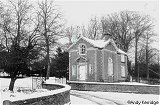 |
 | The Mill | 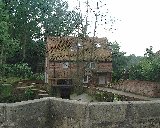 |
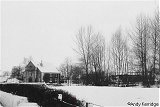 | ||
The Mill - restored about 20 years ago, this had lain derelict for many years. This is currently privately owned by Mr & Mrs Grice. However, going back in time, in 1840, Richard Oxtoby was the corn miller, & in 1872, John Oxtoby had taken over. In 1901, Edwin & Anthony Collinson were noted as being millers, followed by Fred Rennison in the 1937 directory - although living just outside the village at Ranbeck.
I remember Fred Rennison, who became the gamekeeper, living in a cottage in the middle of Buttercrambe Woods. He was a large man, & he died 4-5 years ago. My father said he was still a large man when he died, as my father was one of those carrying the coffin.
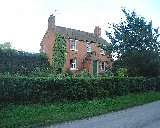 | Mill House |
Mill House - built around 1900 as the farmhouse for Mill House Farm. This is no longer a working farm. The last farmer, Mr Lacey, retired in about the mid-1970's, and all but about 3 acres of land were re-distributed among the other nearby tenant farmers. The land was mainly river meadows. The next occupant was Bob Seaman, a farmworker for my father, Alan Kerridge, when he was farming Wood House Farm. In about 1978, my parents moved in, and have lived there ever since. The directories rarely connect the farmers names with the farms they occupied, so we only know that in 1937, Vincent Rennison was resident in Mill House, as a carrier & pig dealer.
 | Buttercrambe House, one of the few privately owned houses in the village |  |
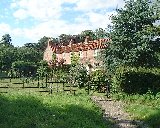 | Numbers 1-3 Church Walk, viewed from the church |
Numbers 1-3 Church Walk - viewed from the church. No 1 is the one facing the road, and this used to be the village pub, The Nag's Head. There were 4 cottages, but they were converted in around 1950's.
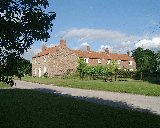 | Numbers 1-3 Church Walk, from the road |
Numbers 1-3 Church Walk from the road, showing a better view of No 1, which used to be the pub.
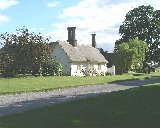 | Home Farm |
Home Farm. This is probably the oldest building still standing in the village. It is at least 400 years old. Aldby Park is younger, being built about 1725. It has been occupied by the same person for as long as I can remember, although many of the farm buildings have been converted into small industrial units now.
The blacksmith's shop was at the end of the village, on the junction of the road to Bossall, and was demolished in the mid-1950's.
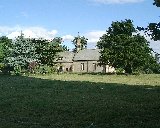 | St John the Evangelist's Church, Buttercrambe |
Buttercrambe and Aldby Survey. In 1633 George Osborne carried out a survey of these two villages. A small version of the map he produced is shown below. A 6 times larger version can be obtained by clicking on this map.
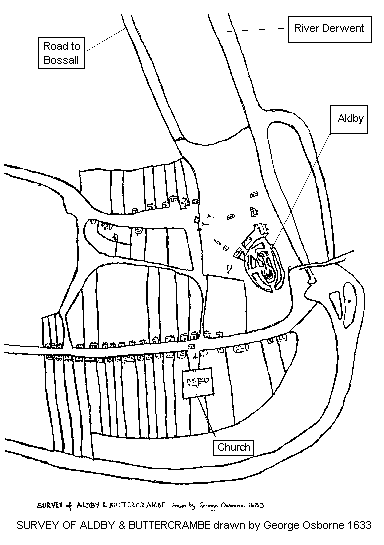
The text and the photographs etc. associated with this page are the copyright of Andy Kerridge. © 2000
